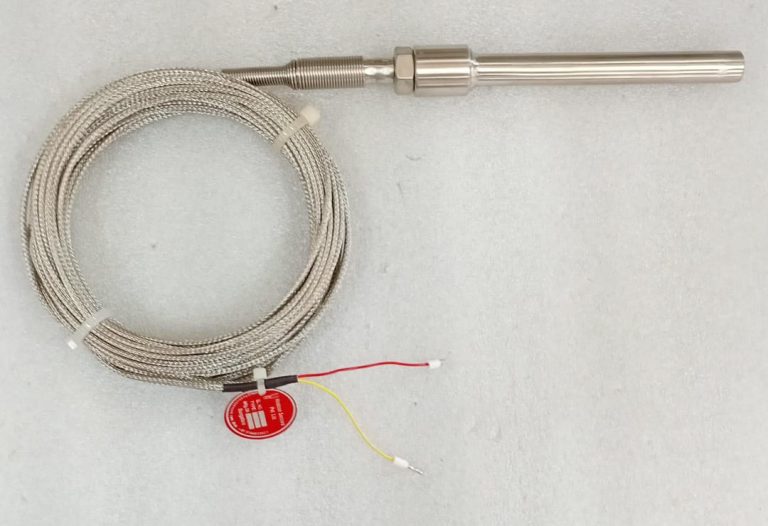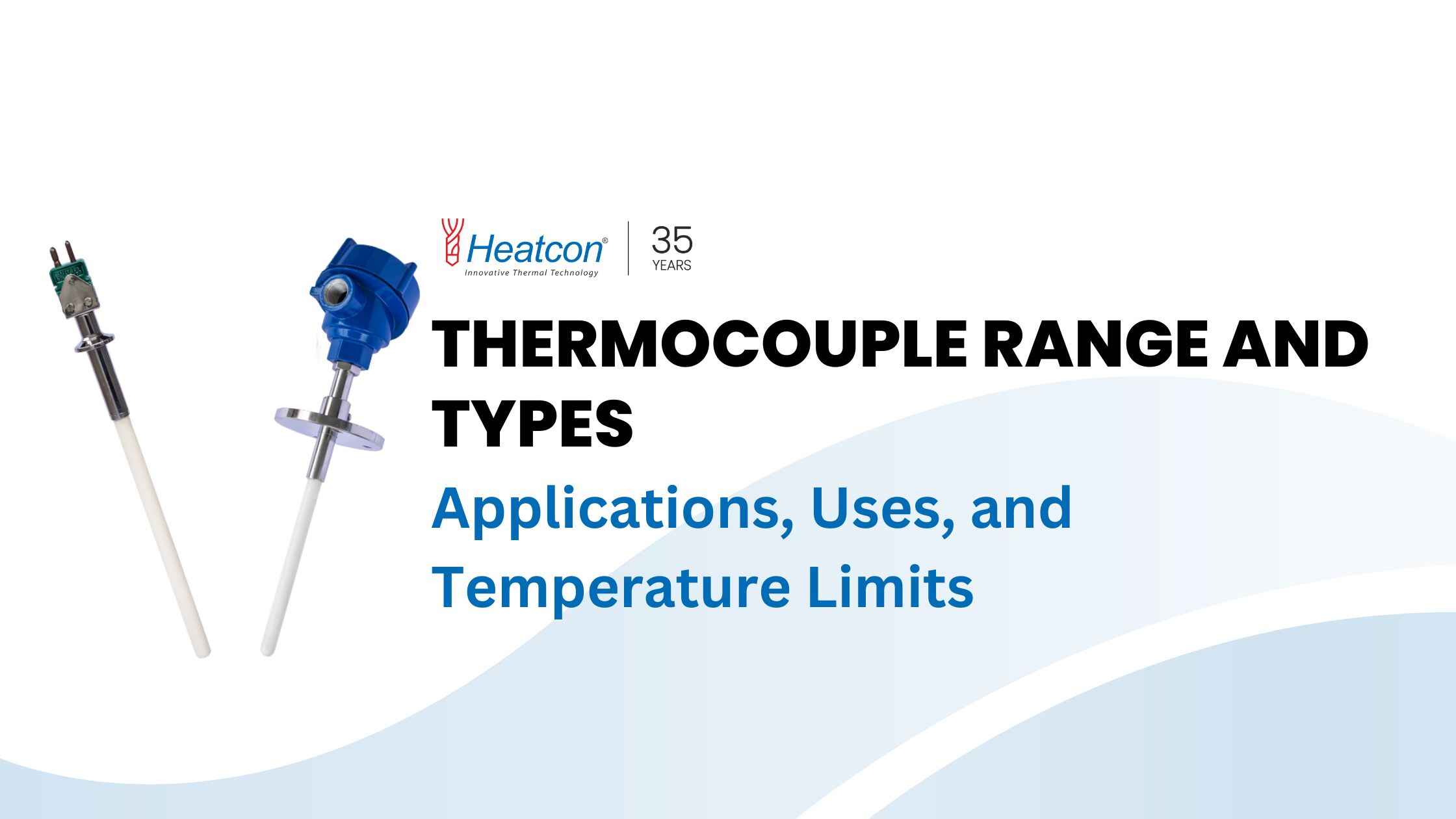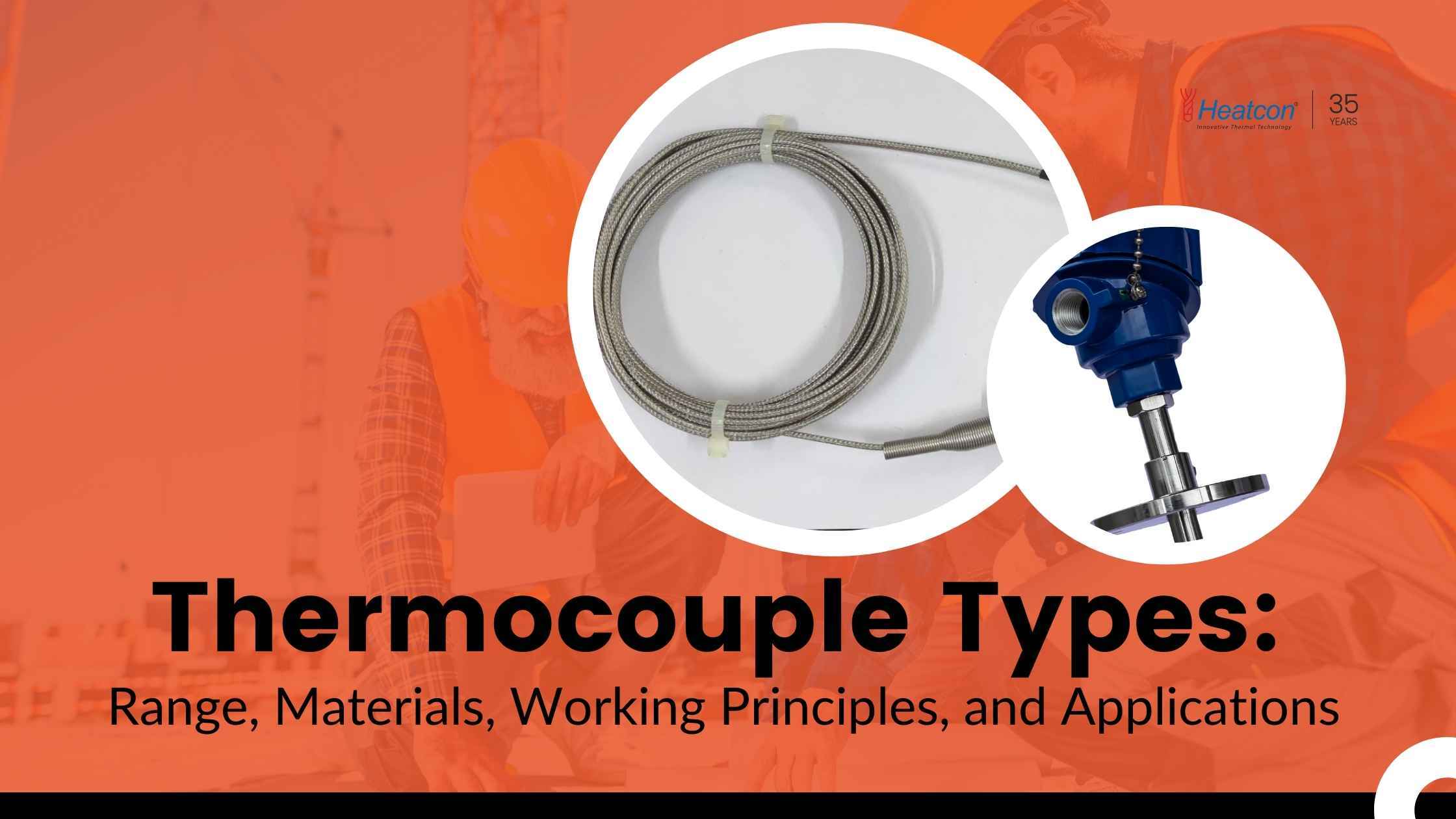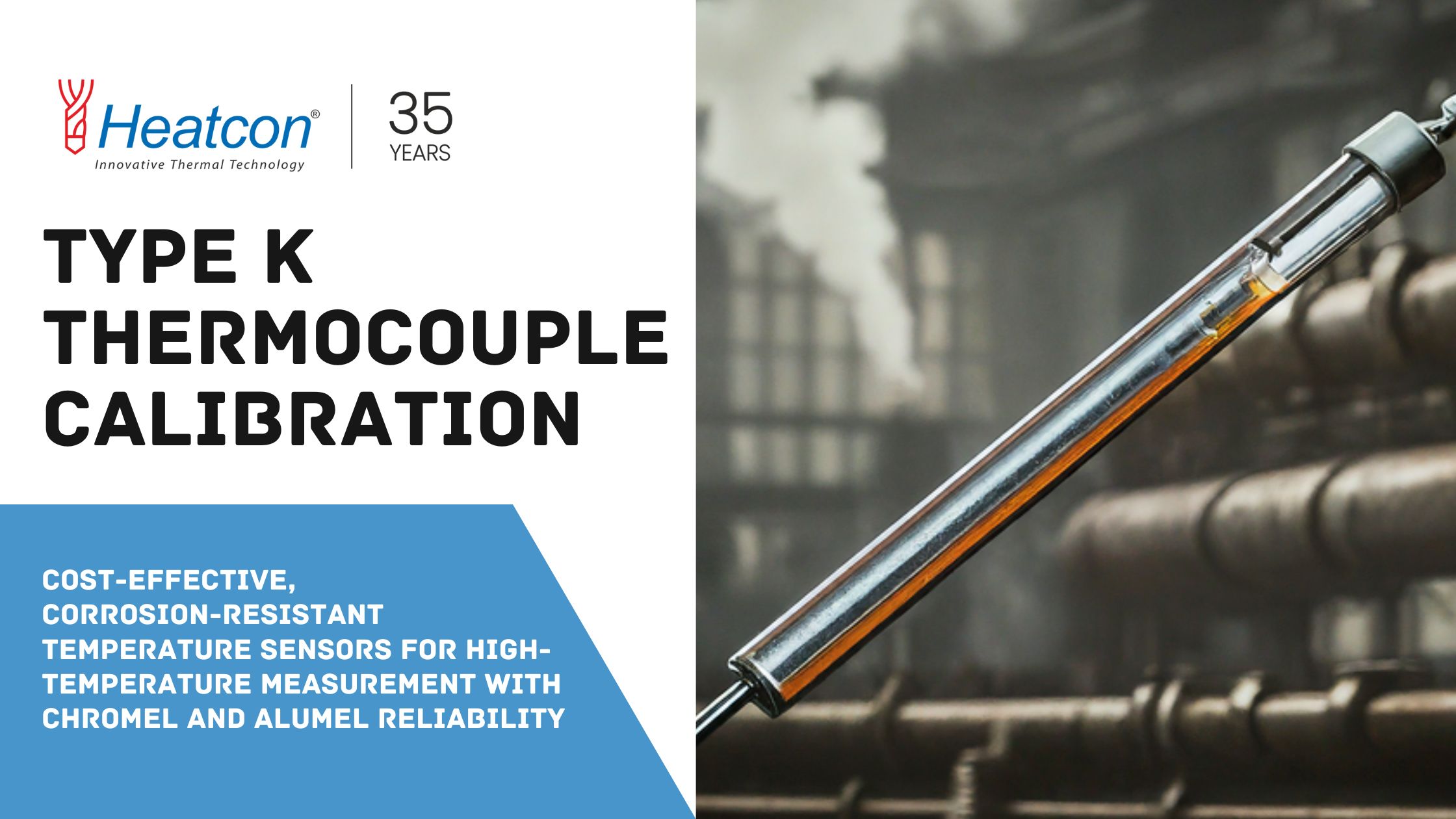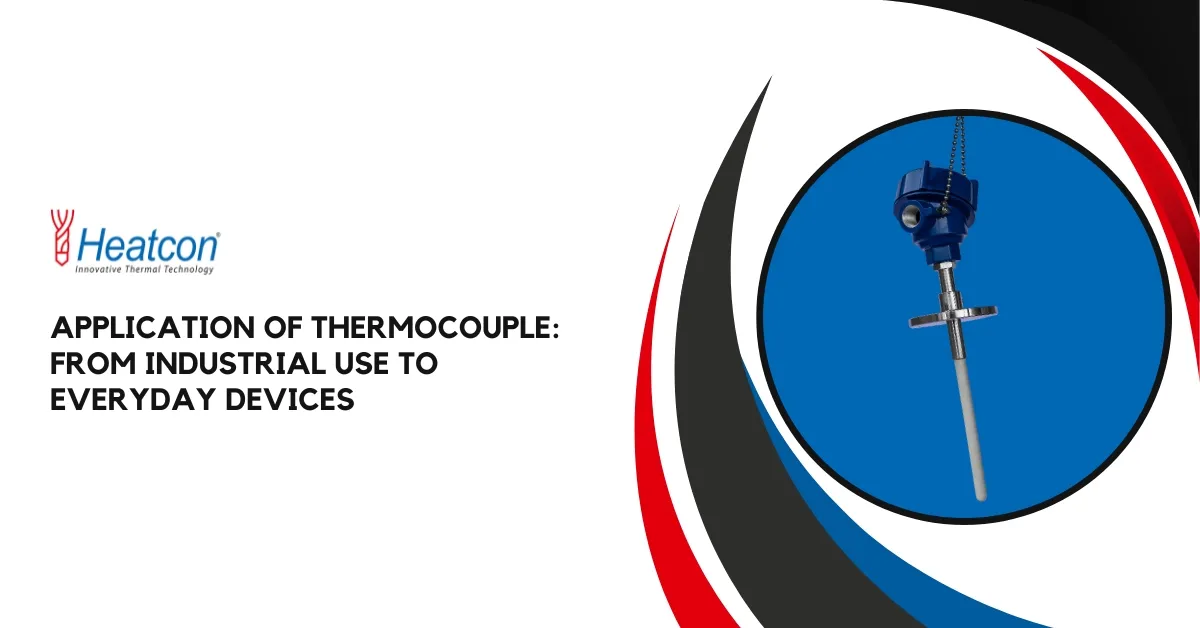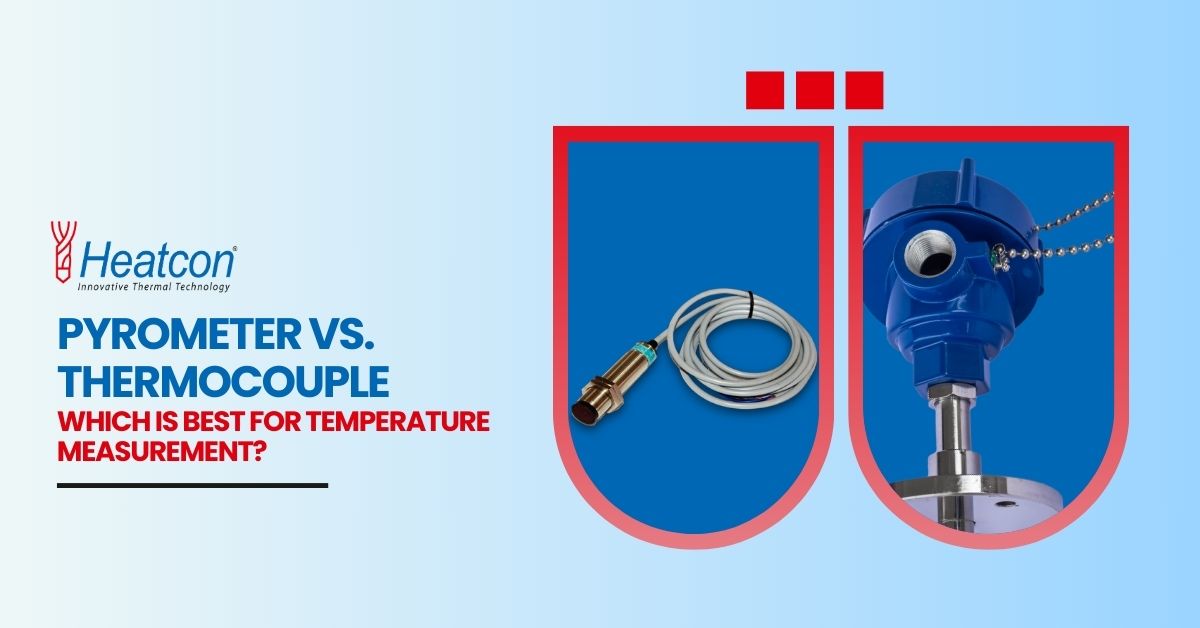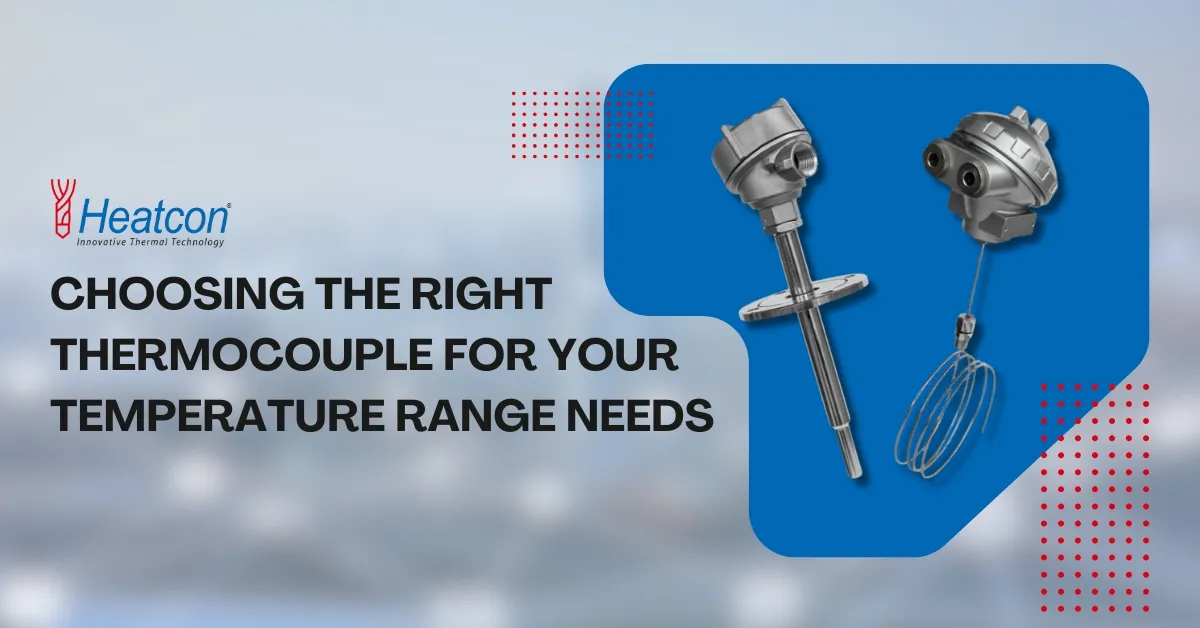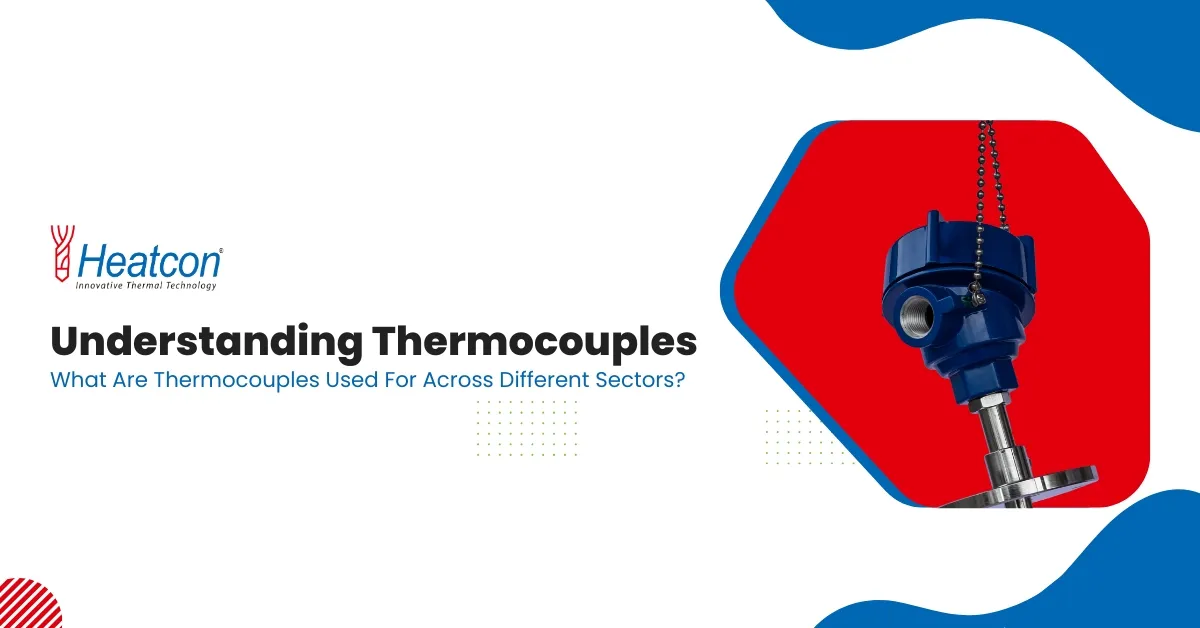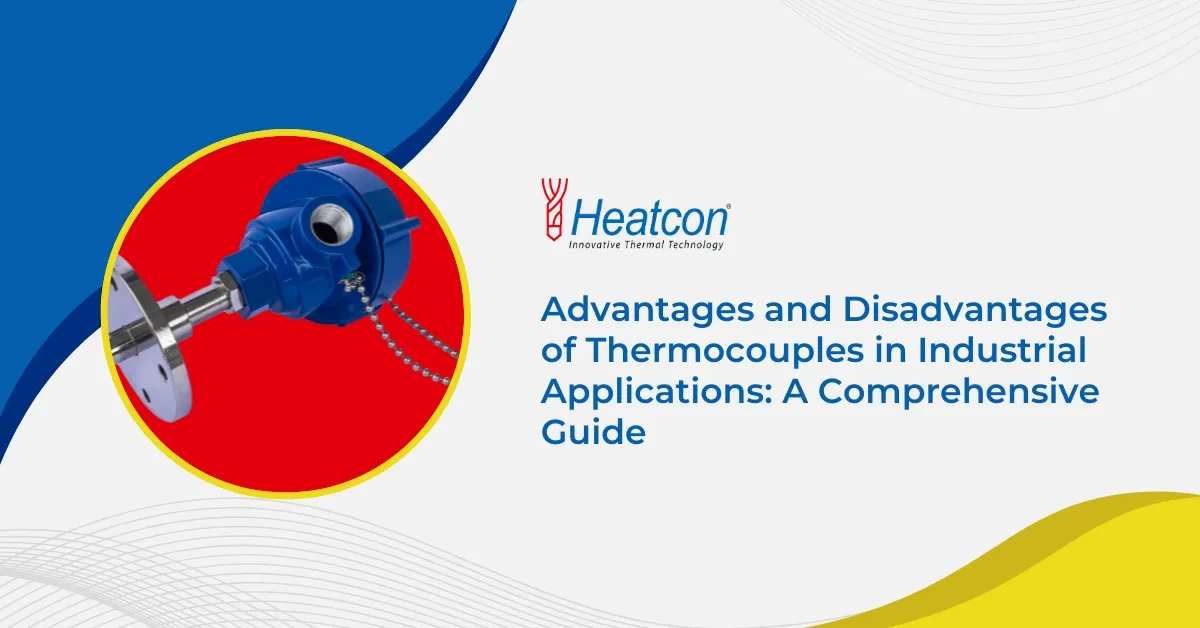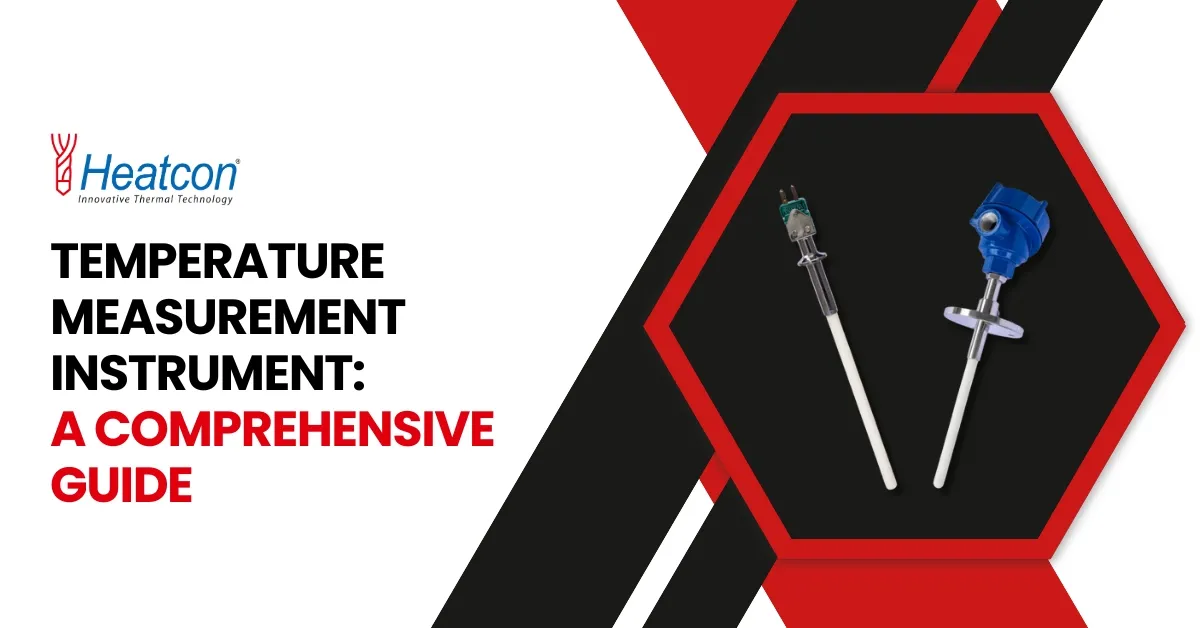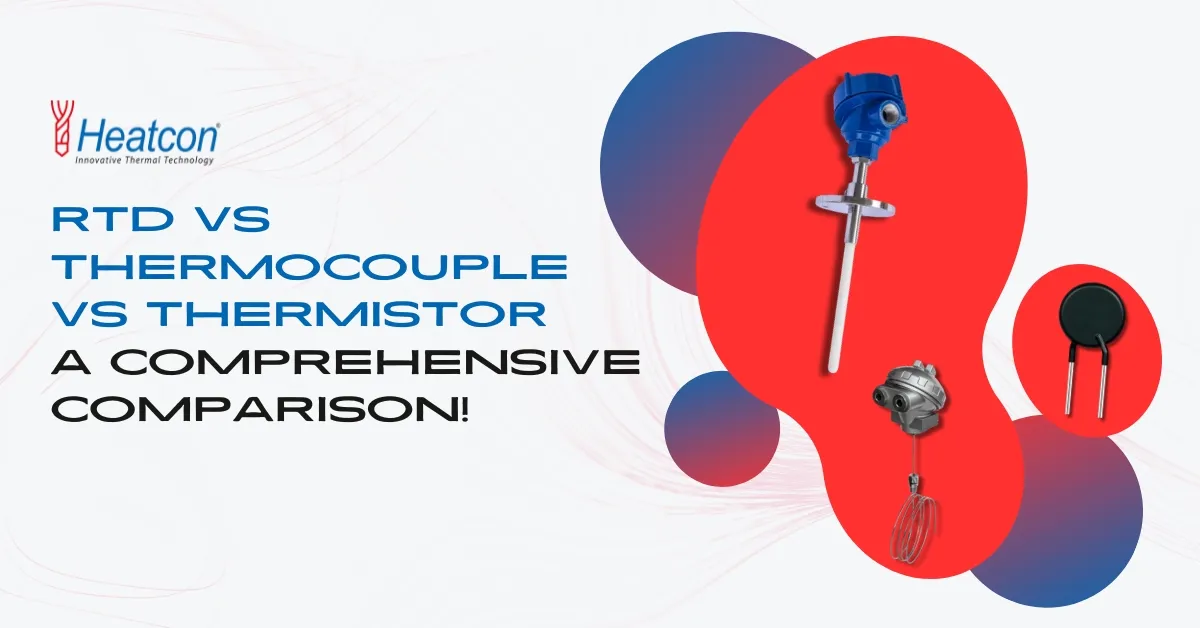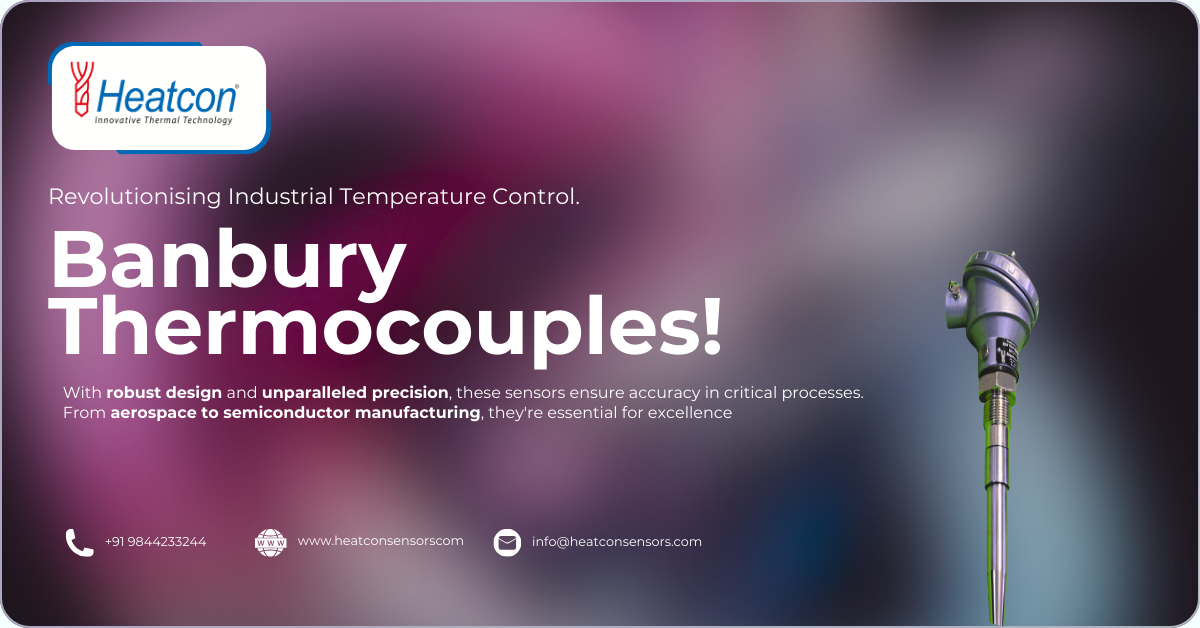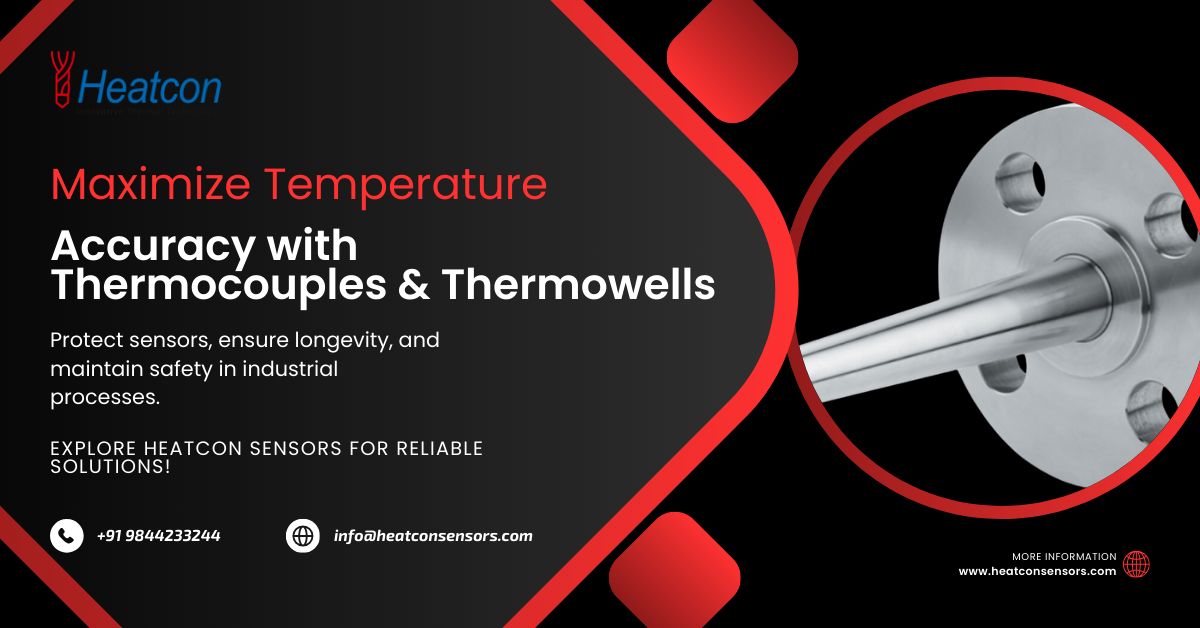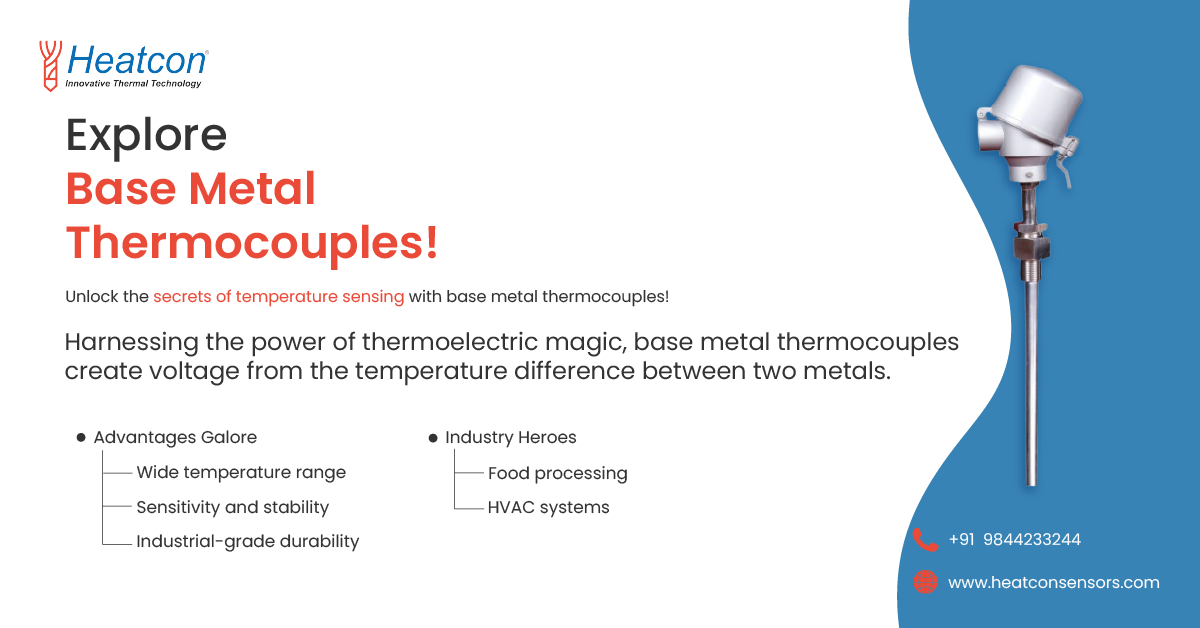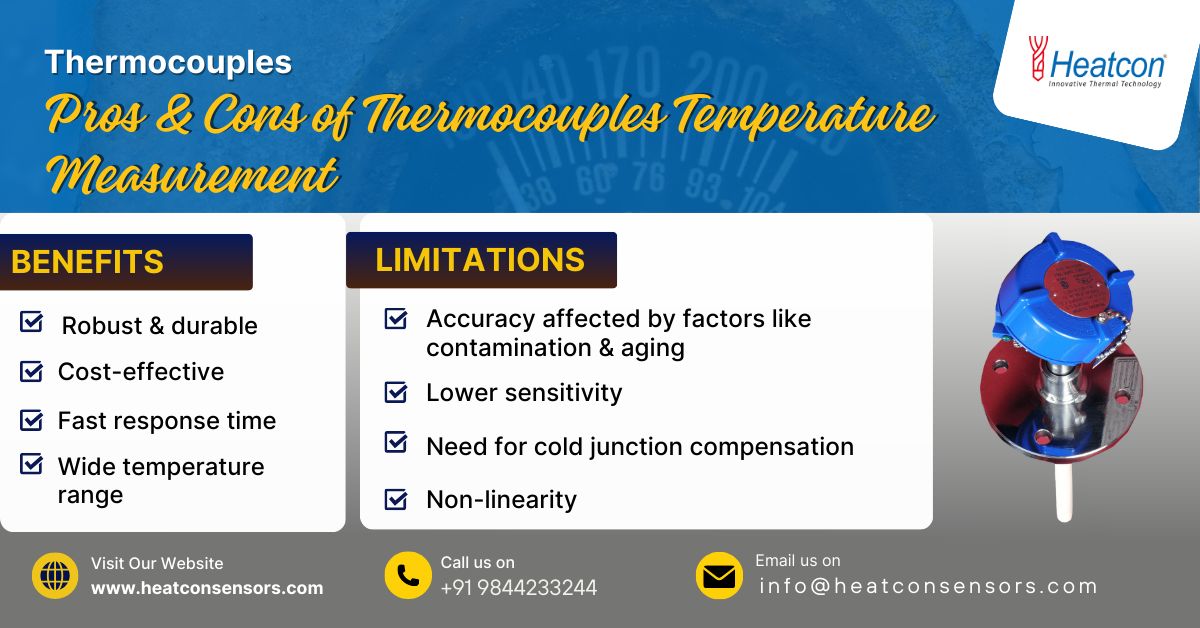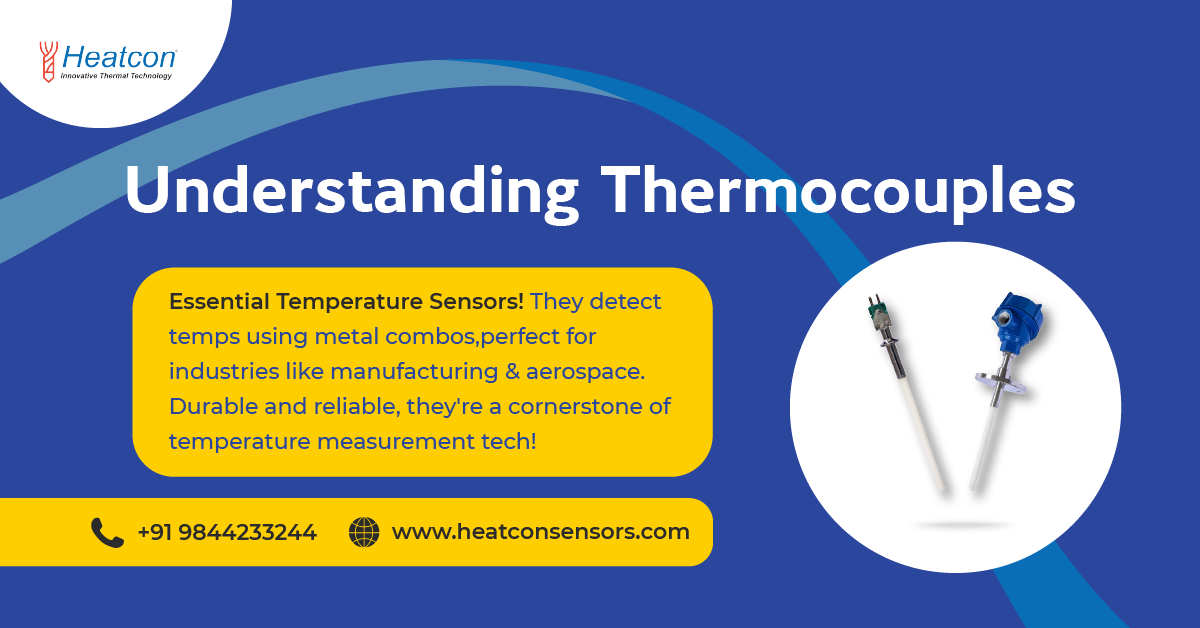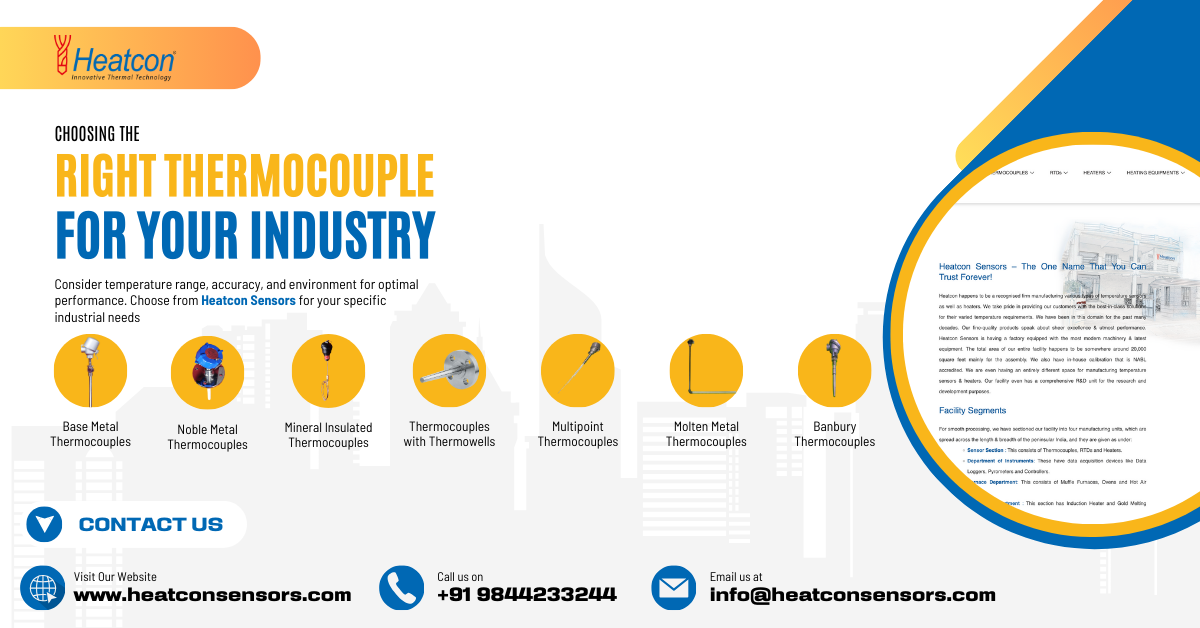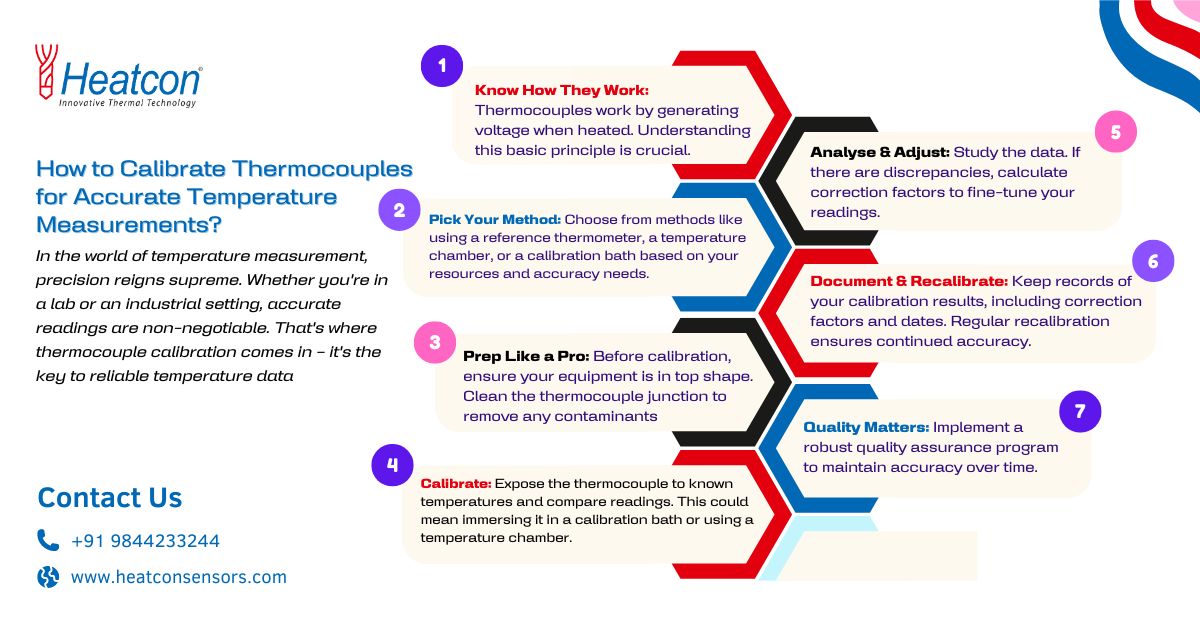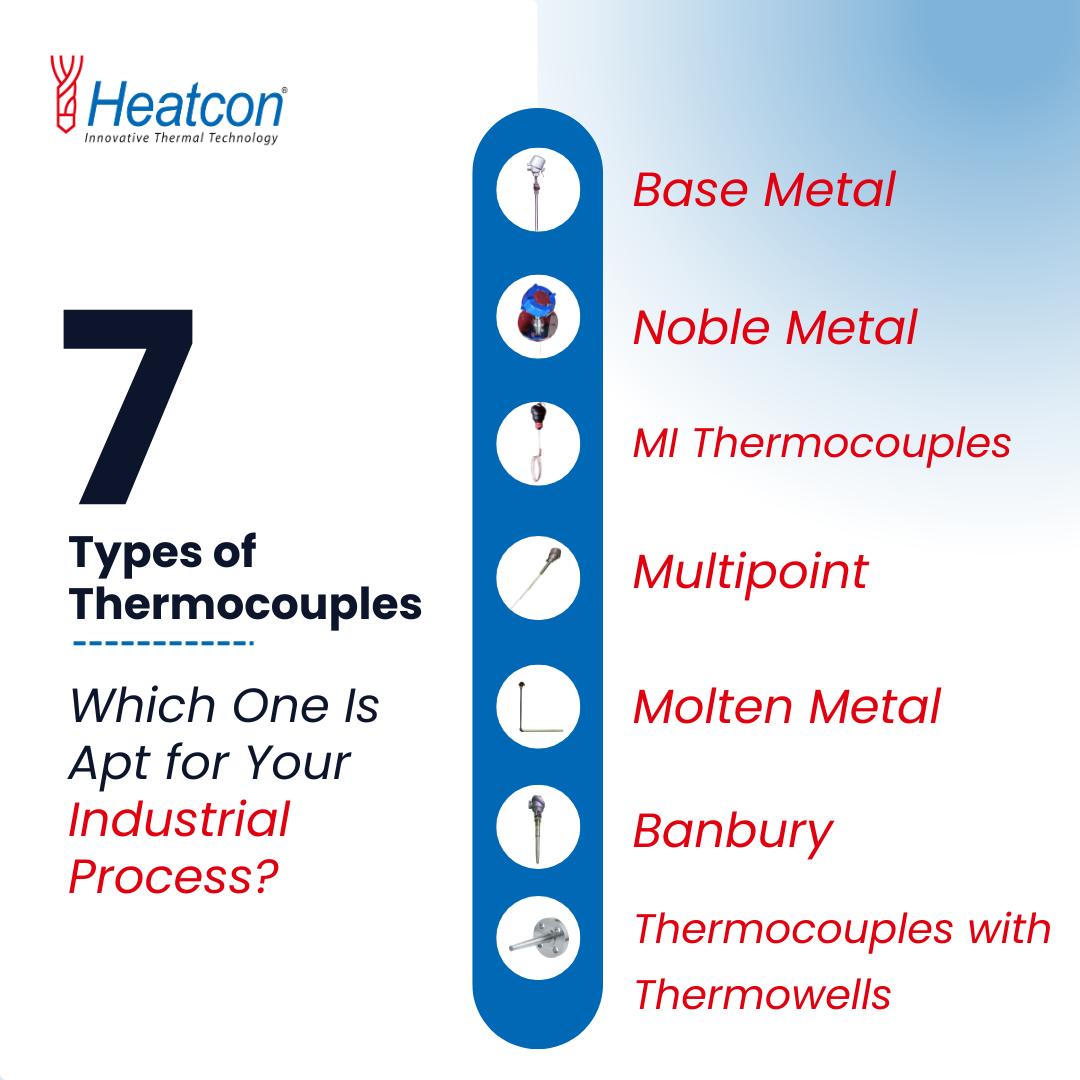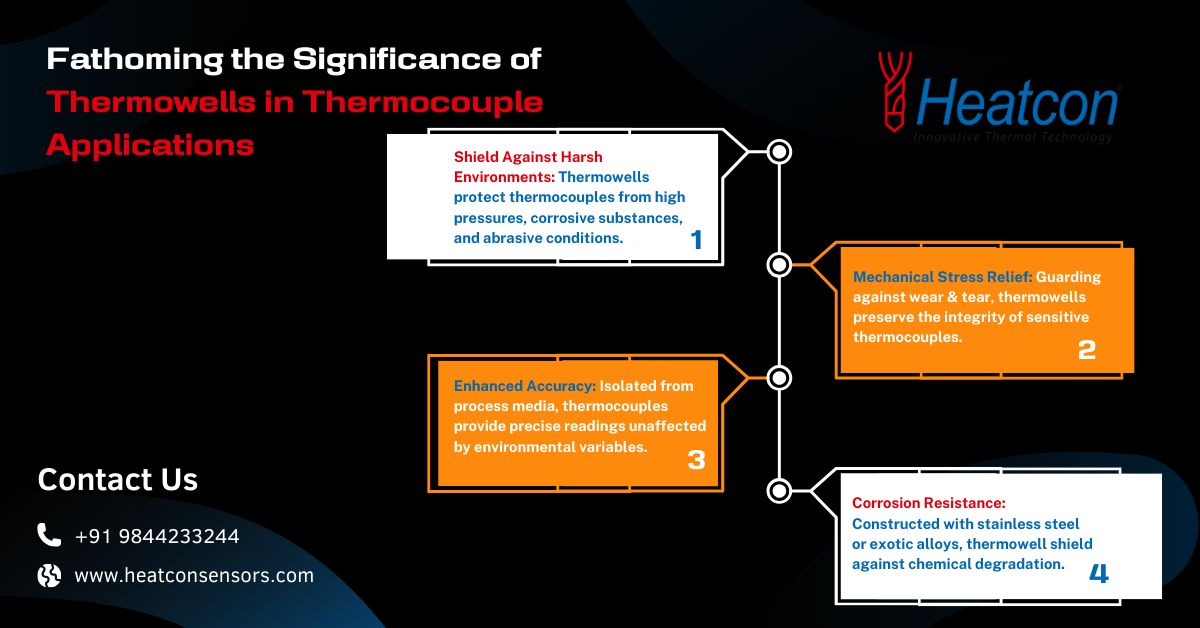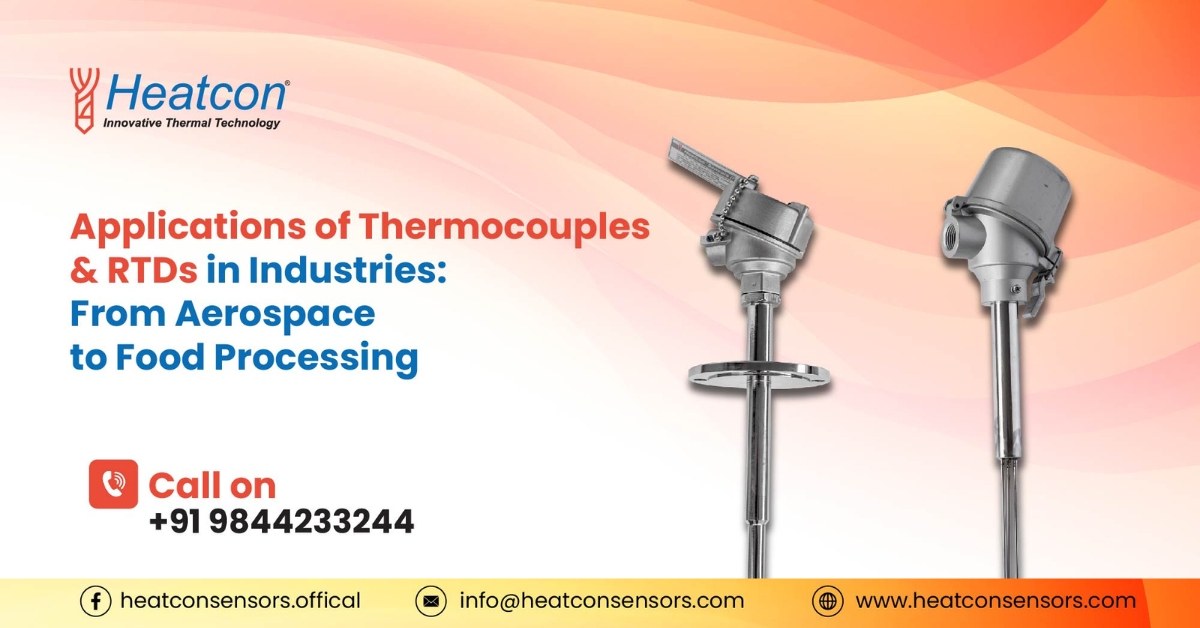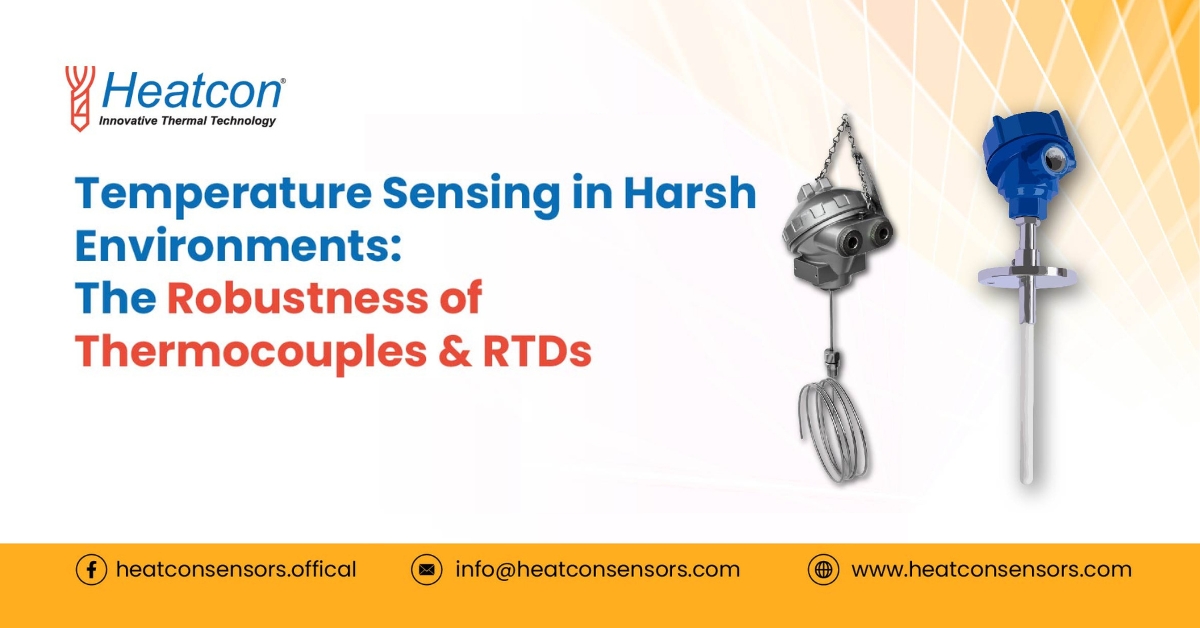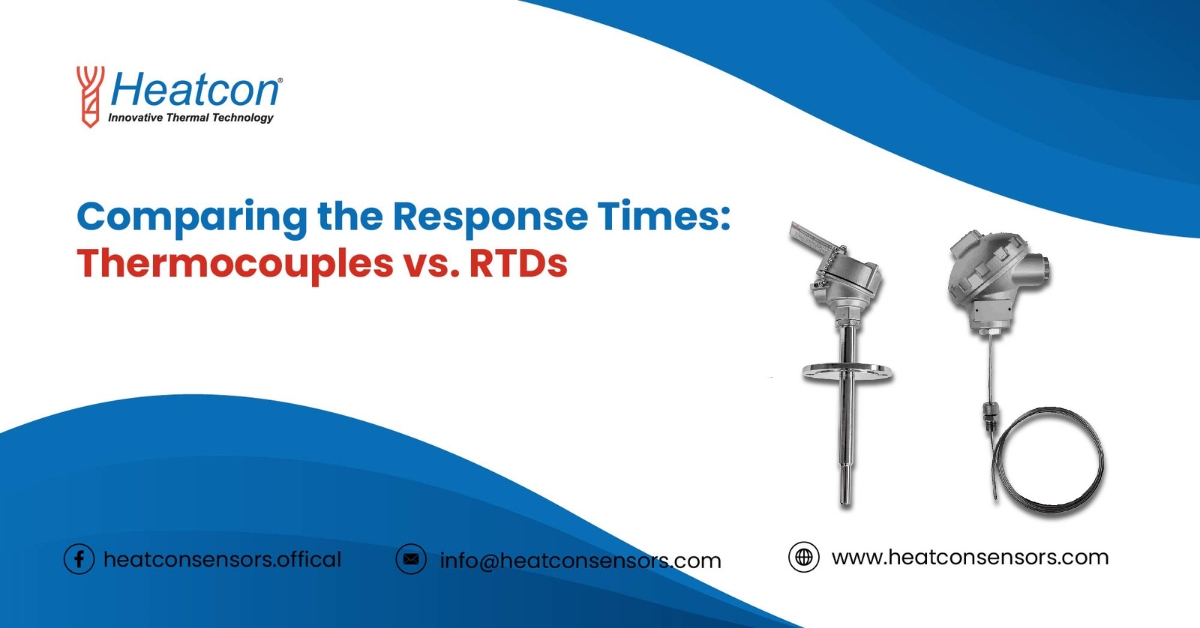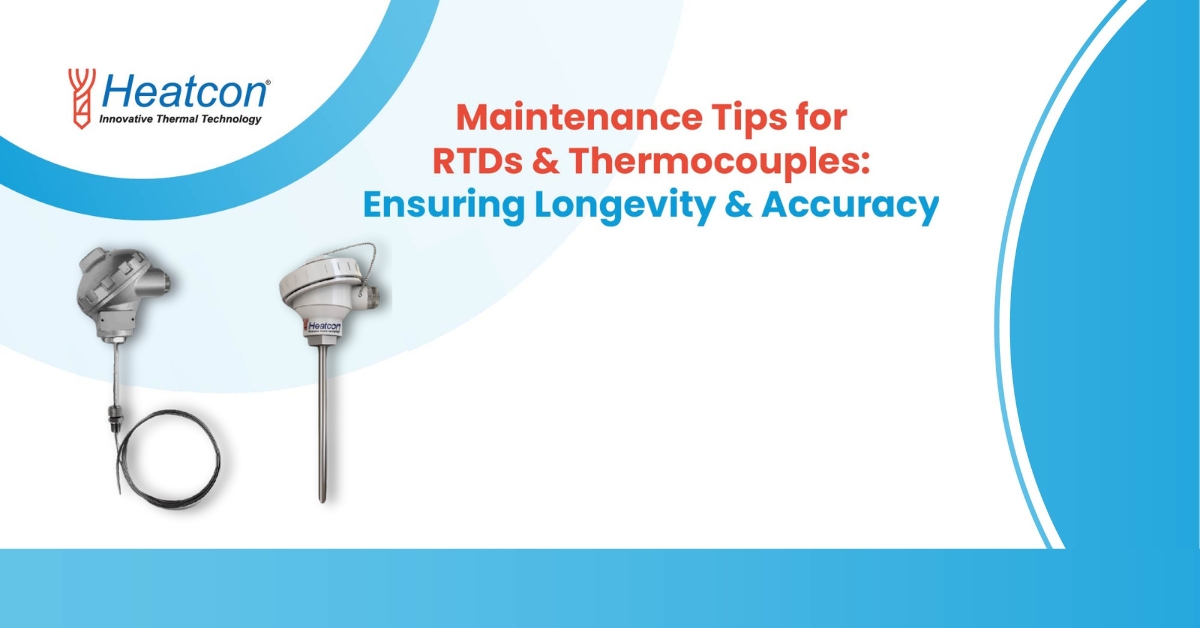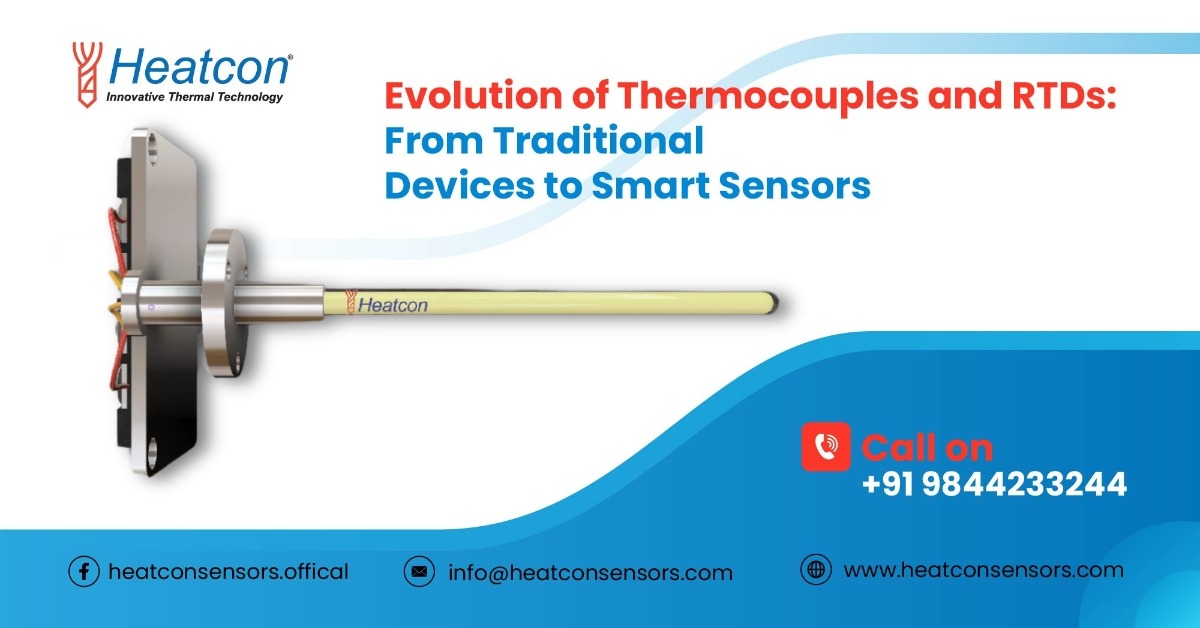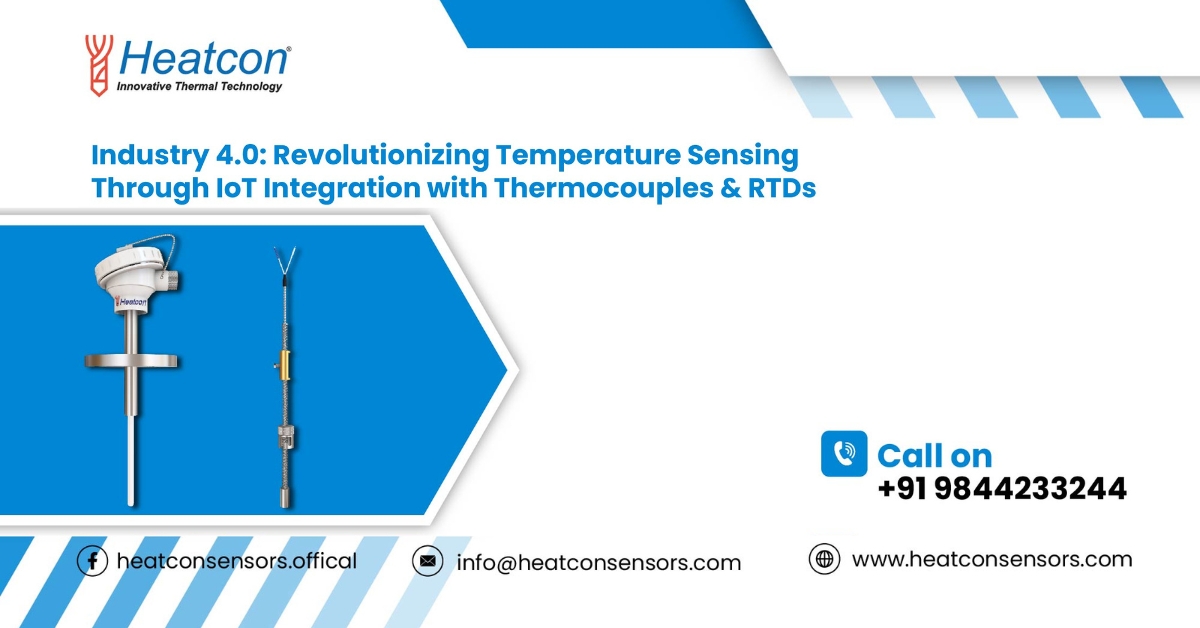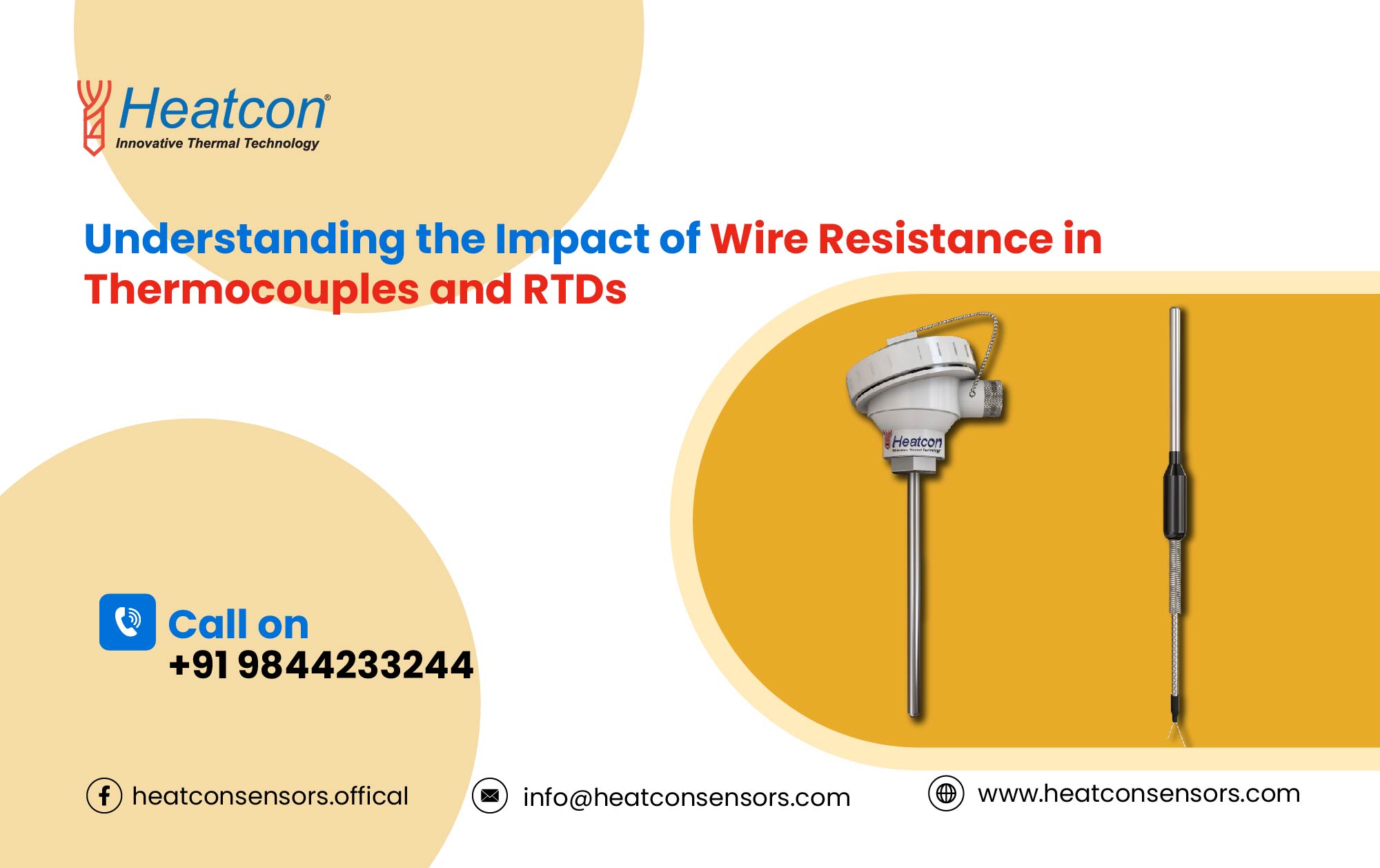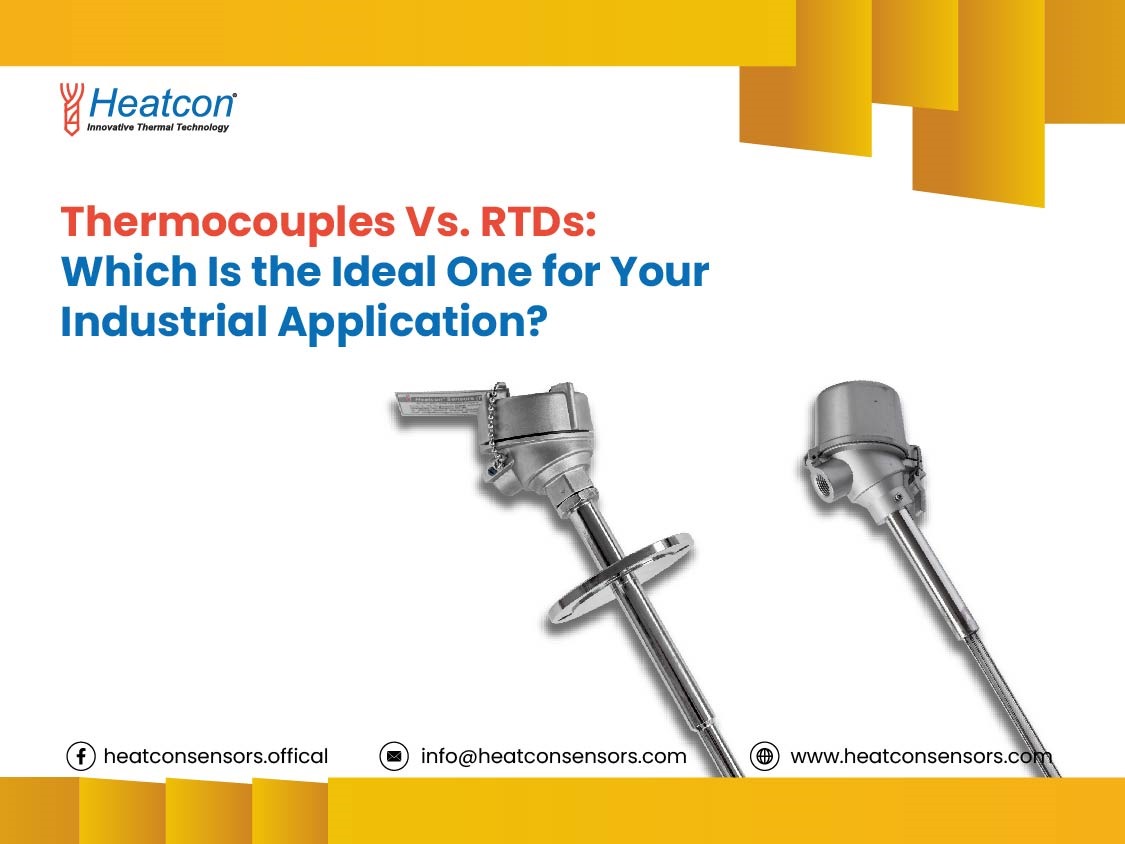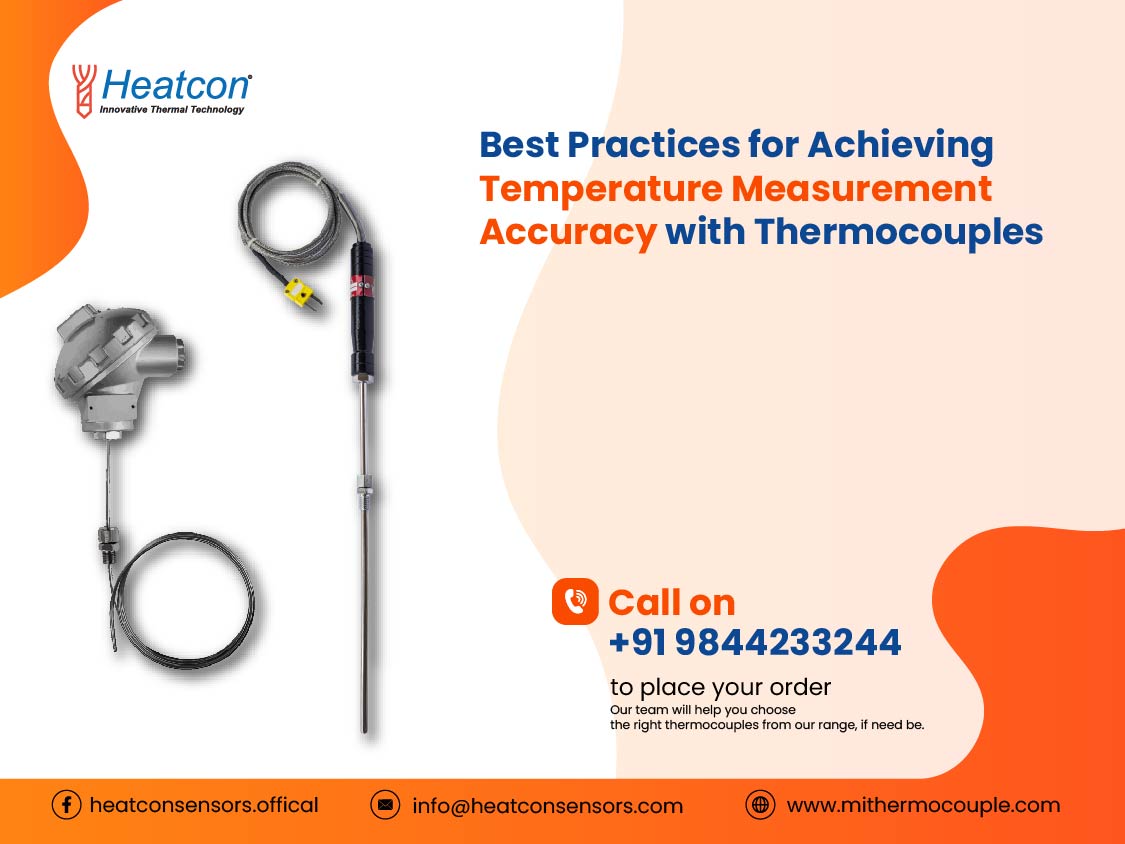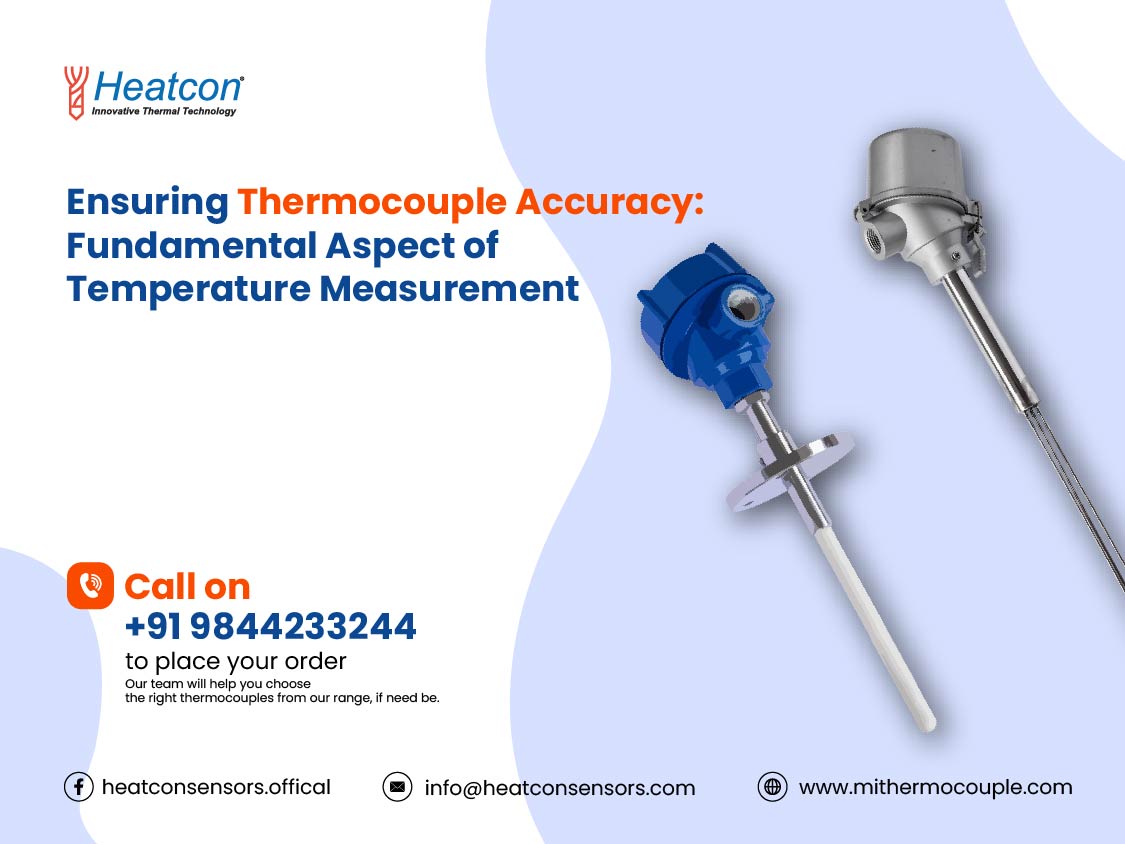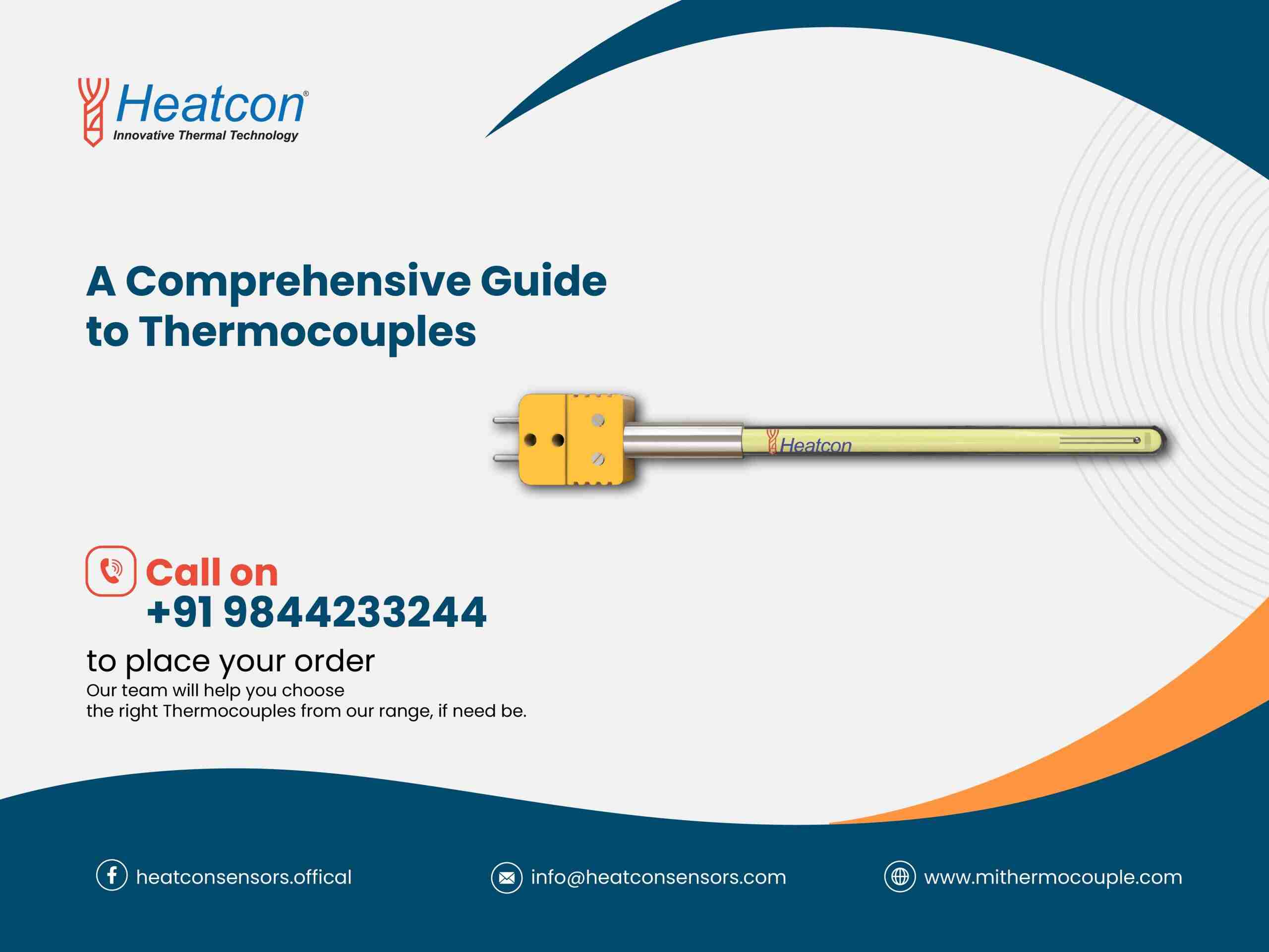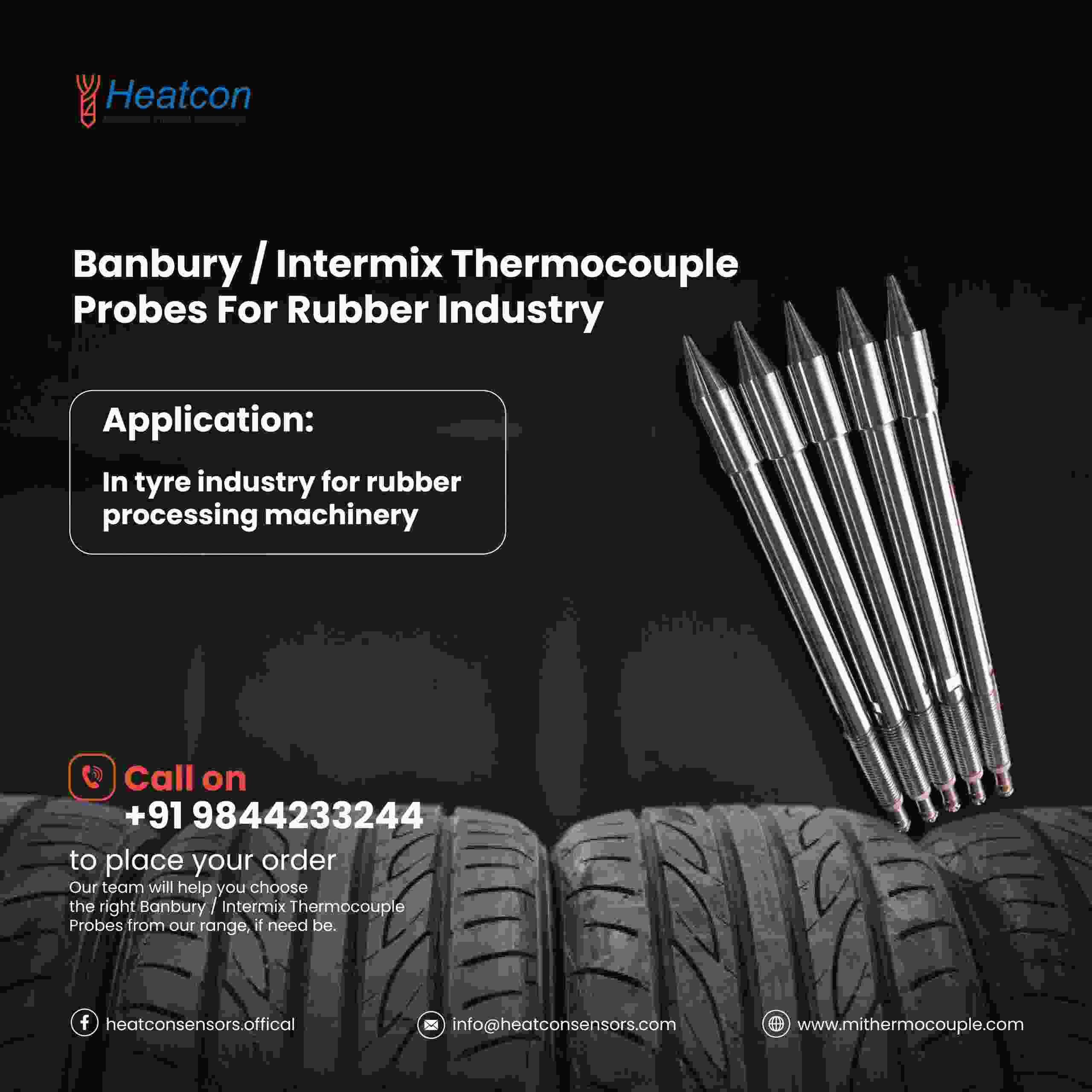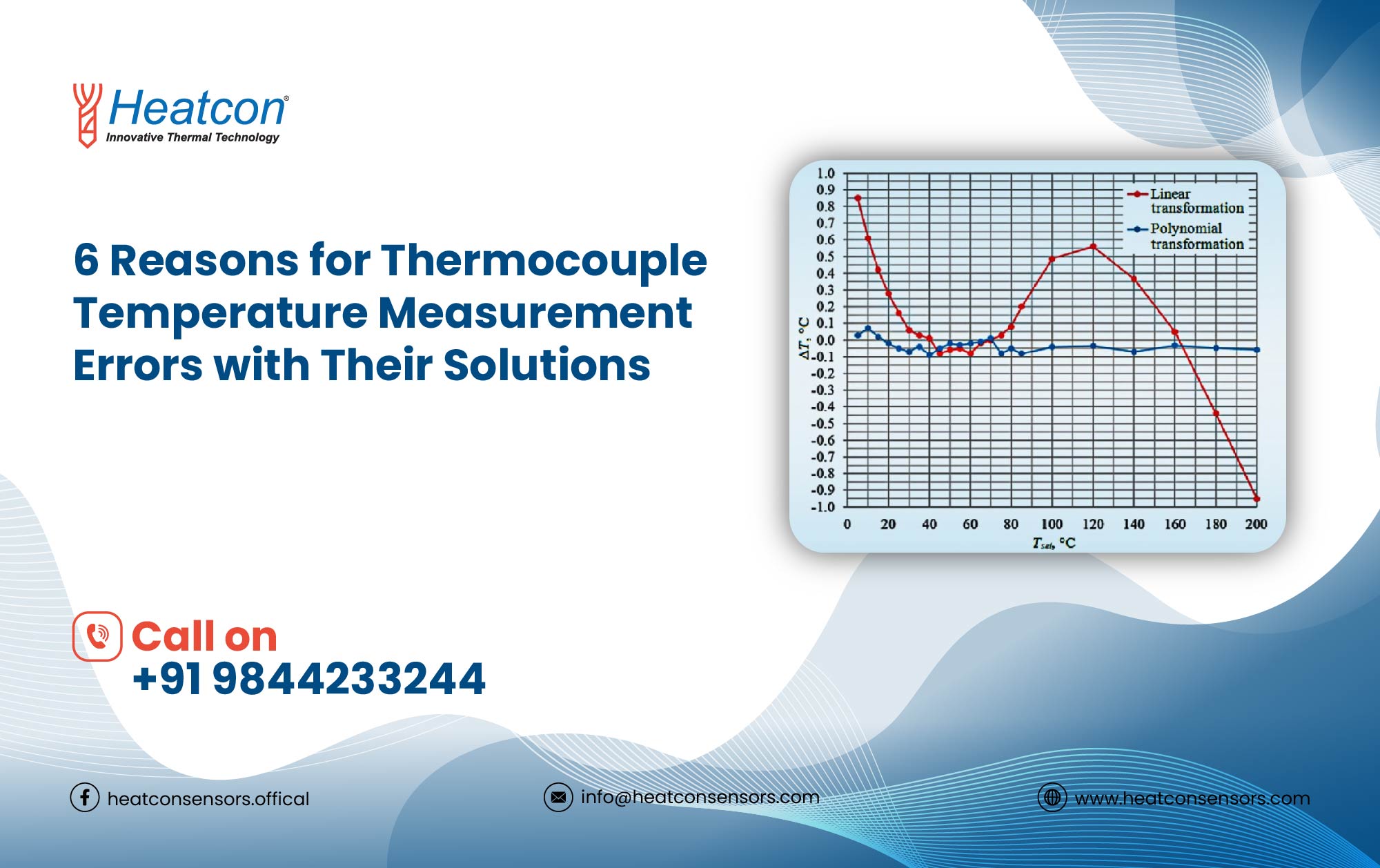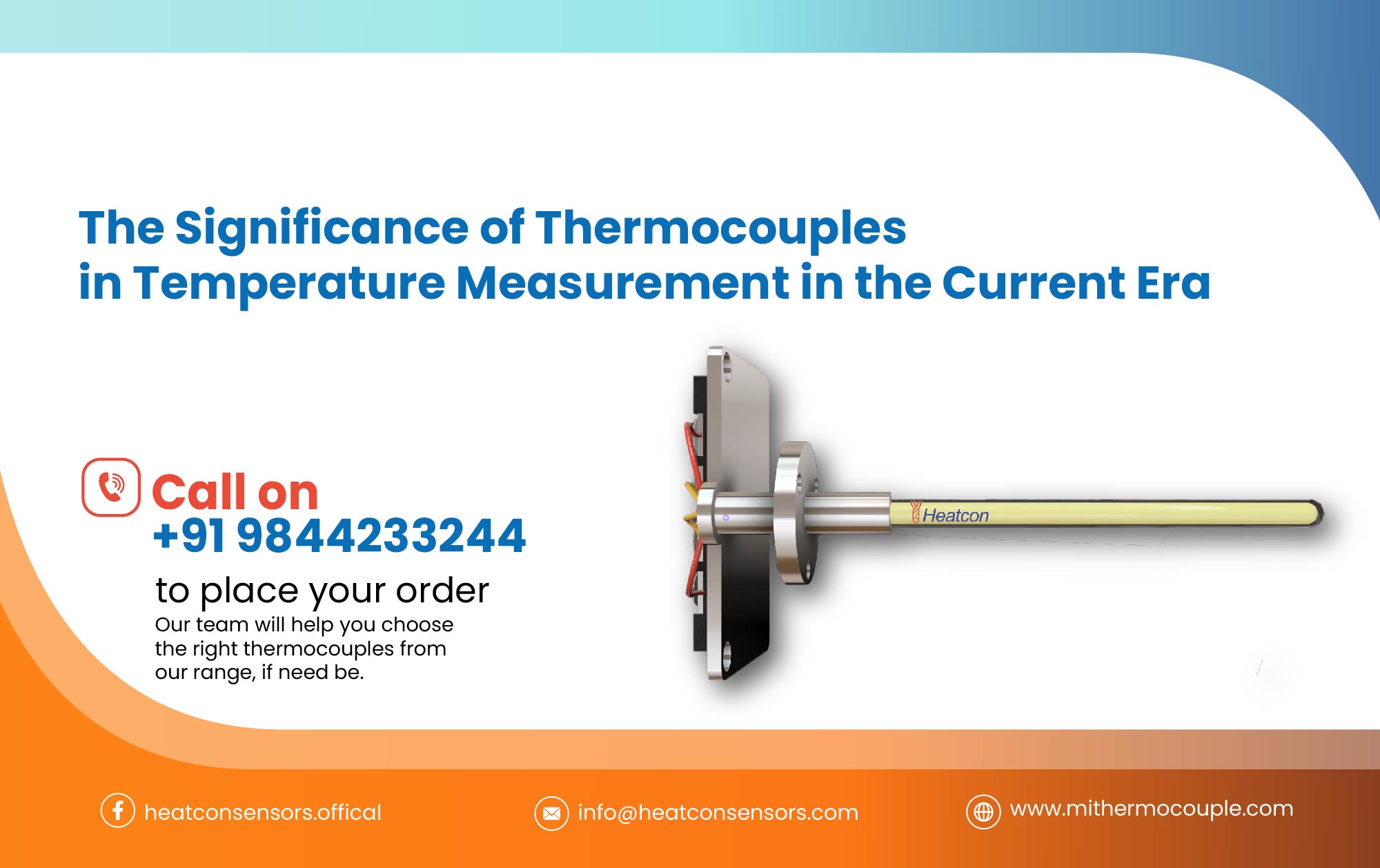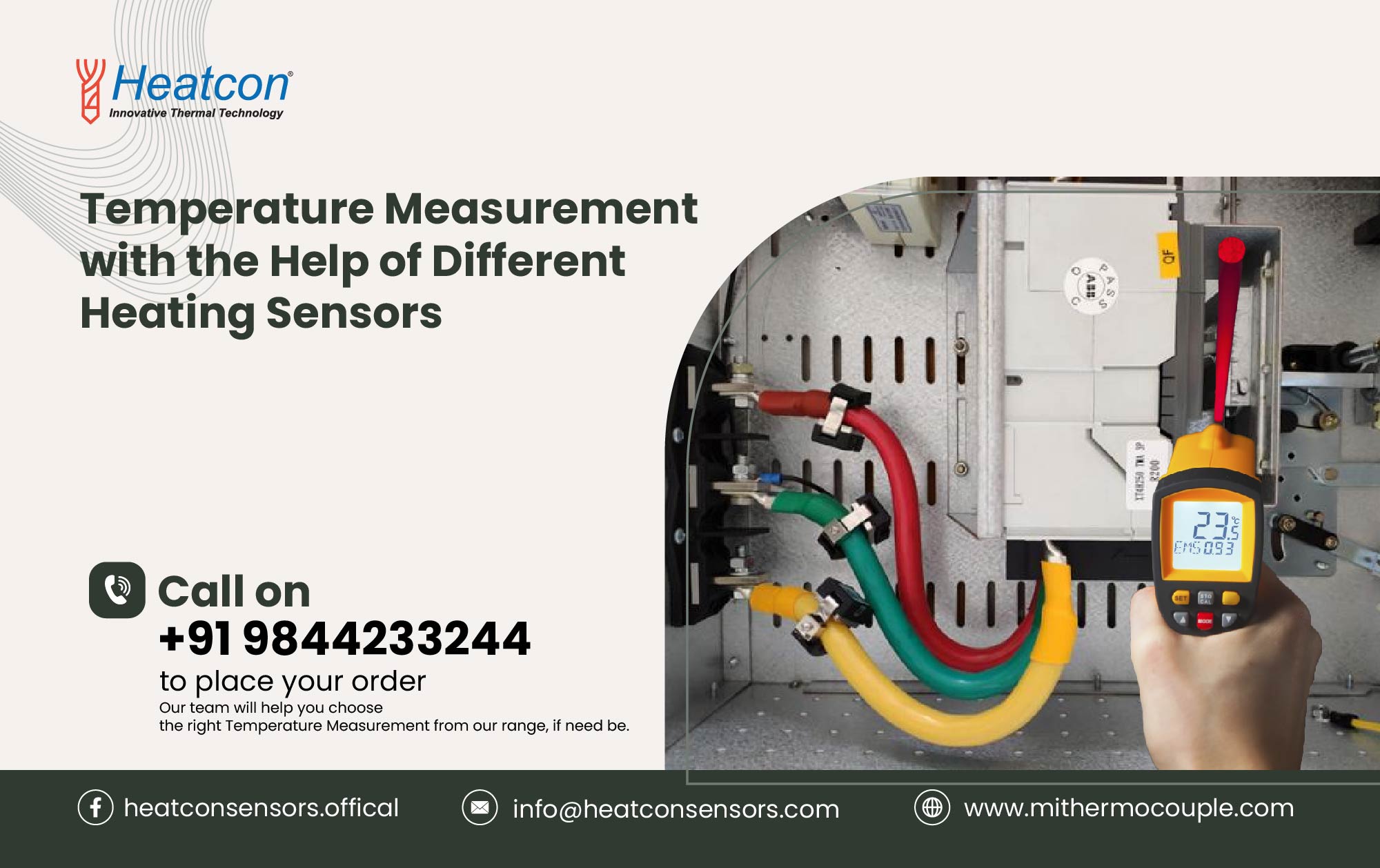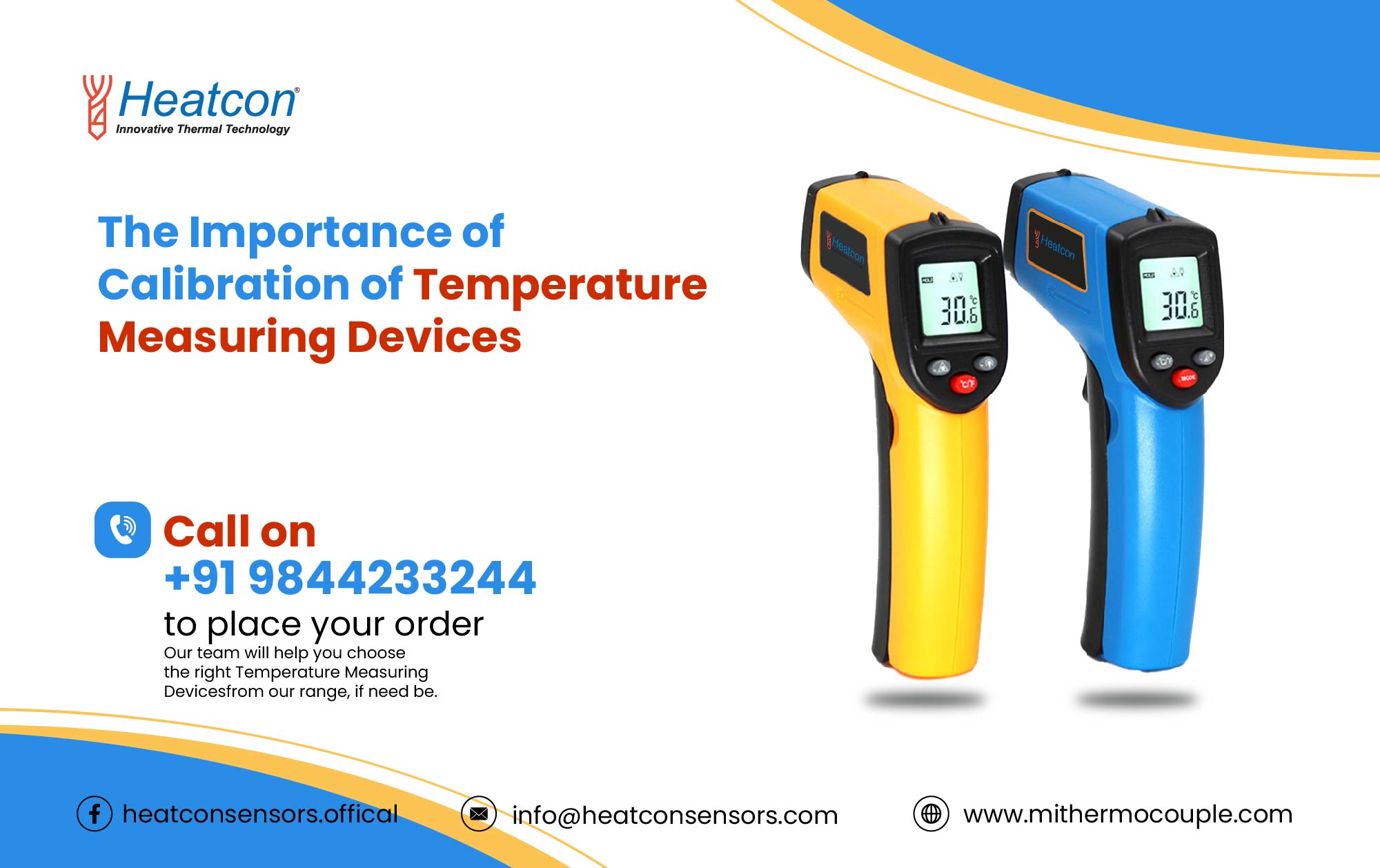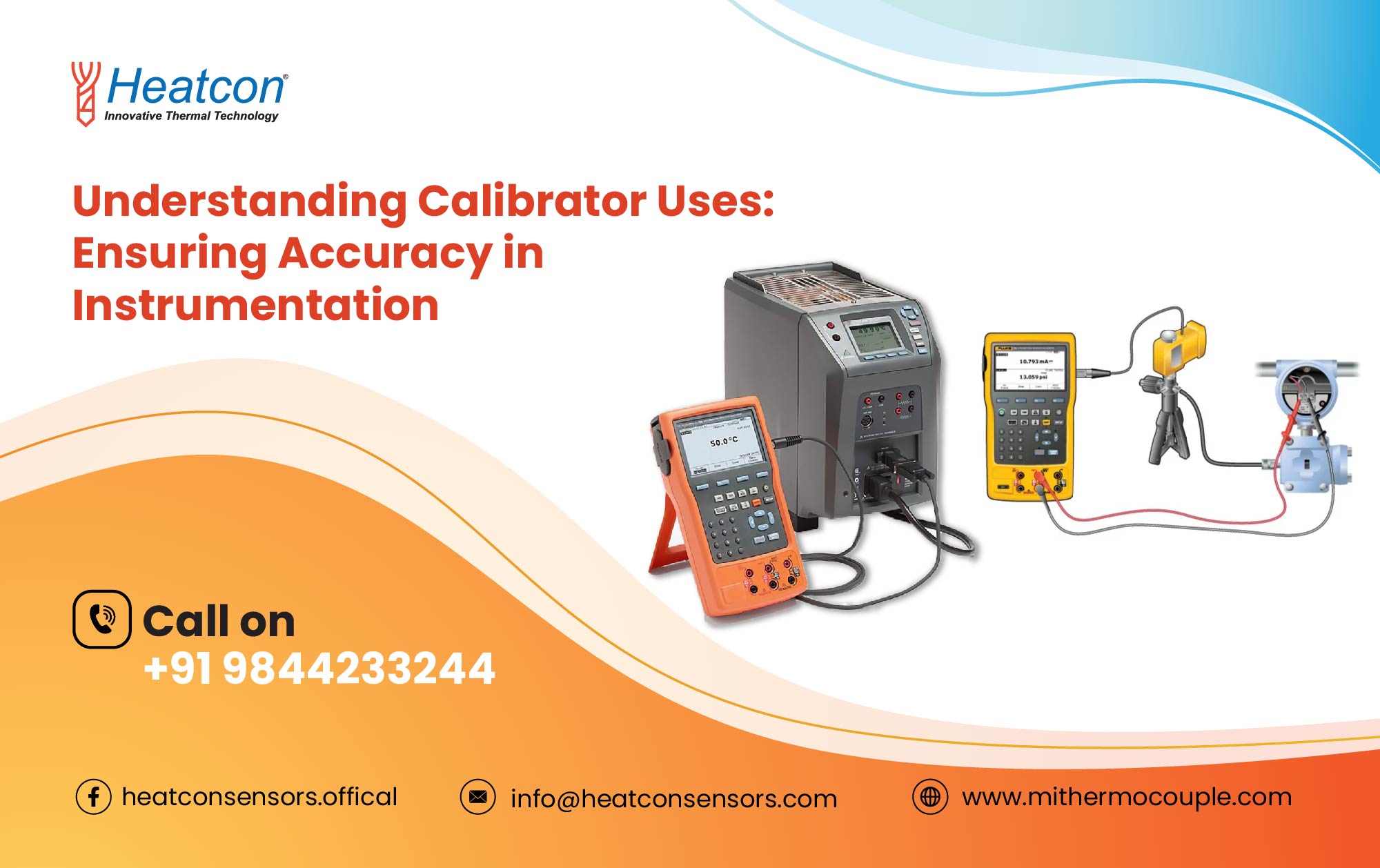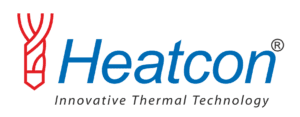According to a market analysis, the global thermocouple market is projected to reach USD 2.5 billion by 2027, driven by increased demand in industrial applications. A thermocouple is used to measure temperature in various industrial processes, ensuring precise monitoring and control of heat levels in manufacturing, chemical processing, and energy generation.
Understanding the Principle Behind Thermocouples
A thermocouple is used to measure temperature based on the Seebeck effect, which occurs when two different metals are joined to create a voltage proportional to the temperature difference between junctions. This voltage is then translated into temperature readings.Role of Thermocouples in Temperature Measurement Application
One of the most crucial aspects of industrial processes is an accurate temperature measurement application. Heatcon Sensors, a leading manufacturer of industrial sensors, provides custom-made thermocouples to fit any industry’s specific needs.Key Temperature Measurement Instruments
Thermocouples are a part of a broader range of temperature measurement instruments that ensure safety and efficiency in industrial environments. Heatcon Sensors manufactures RTDs and thermocouples for global applications, including India, Europe, and the USA.The Importance of a Reliable Heat Measurement Tool
A dependable heat measurement tool is critical in industries such as metallurgy, power plants, and HVAC systems. Thermocouples, due to their robustness and precision, have become the preferred choice for many industrial applications.Types of Temperature Measuring Instruments
Industrial environments use a variety of temperature measuring instruments, including thermocouples, RTDs, infrared sensors, and thermistors. Heatcon Sensors custom manufactures these instruments to meet specific industry requirements.Advantages of Using Industrial Temperature Sensors
Industrial temperature sensors are designed for high accuracy and durability. Heatcon Sensors specializes in developing sensors for sectors such as aerospace, automotive, and heavy engineering.The Role of a Heat Measuring Device in Precision Monitoring
Having an efficient heat measuring device ensures that industries maintain optimal working conditions, reducing risks and enhancing productivity.Why Use a Temperature Check Device?
A temperature check device is essential for continuous monitoring in industrial applications. Heatcon Sensors provides precision-engineered devices to industries worldwide.Heatcon Sensors: Your Partner in Industrial Temperature Solutions
Heatcon Sensors is dedicated to manufacturing top-quality temperature sensors and heat-generating equipment such as furnaces, ovens, and hot air blowers. With global reach and customization capabilities, Heatcon Sensors serves industries worldwide, ensuring optimal temperature monitoring and control.Frequently Asked Questions (FAQ)
1. How a thermocouple is used to measure temperature?
A thermocouple is used to measure temperature by generating a voltage that corresponds to the temperature difference between two metal junctions. This voltage is then interpreted to provide accurate temperature readings.
2. What are common temperature measurement applications in industries?
Temperature measurement applications include monitoring temperatures in manufacturing, chemical processing, energy generation, and HVAC systems to ensure process control and safety.
3. What are the different types of temperature measurement instruments?
Temperature measurement instruments include thermocouples, RTDs (Resistance Temperature Detectors), infrared sensors, and bimetallic thermometers. Heatcon Sensors manufactures customized instruments to meet industrial requirements.
4. What is a heat measurement tool?
A heat measurement tool is any device used to measure thermal energy in an environment or system. Thermocouples, infrared thermometers, and calorimeters are examples of such tools.
5. What are the most reliable temperature measuring instruments?
Temperature measuring instruments such as thermocouples, RTDs, and digital thermometers are widely used in industrial applications for their accuracy and durability.
6. Why are industrial temperature sensors crucial for manufacturing?
Industrial temperature sensors are vital for maintaining safety and efficiency in industrial environments. They are used in industries such as aerospace, automotive, and food processing to ensure precise temperature control.
7. What is the role of a heat measuring device?
A heat measuring device helps industries monitor and control temperature variations. These devices ensure proper heat management in systems such as electric furnaces and heat treatment plants.
8. How does a temperature check device improve industrial processes?
A temperature check device ensures that critical industrial operations run at optimal temperatures, reducing equipment failure and improving process efficiency.
Solutions Offered by Heatcon Sensors
Heatcon Sensors specializes in designing and manufacturing high-quality temperature sensors and heat measurement solutions for industries worldwide. Their expertise includes:
- Customized thermocouples and RTDs for various industrial applications.
- High-precision temperature measuring instruments tailored to customer requirements.
- Manufacturing heat measuring device solutions for industrial needs.
- Providing robust industrial temperature sensors for extreme conditions.
- Production of heat-generating equipment such as furnaces, ovens, hot air blowers, and electric furnaces.


